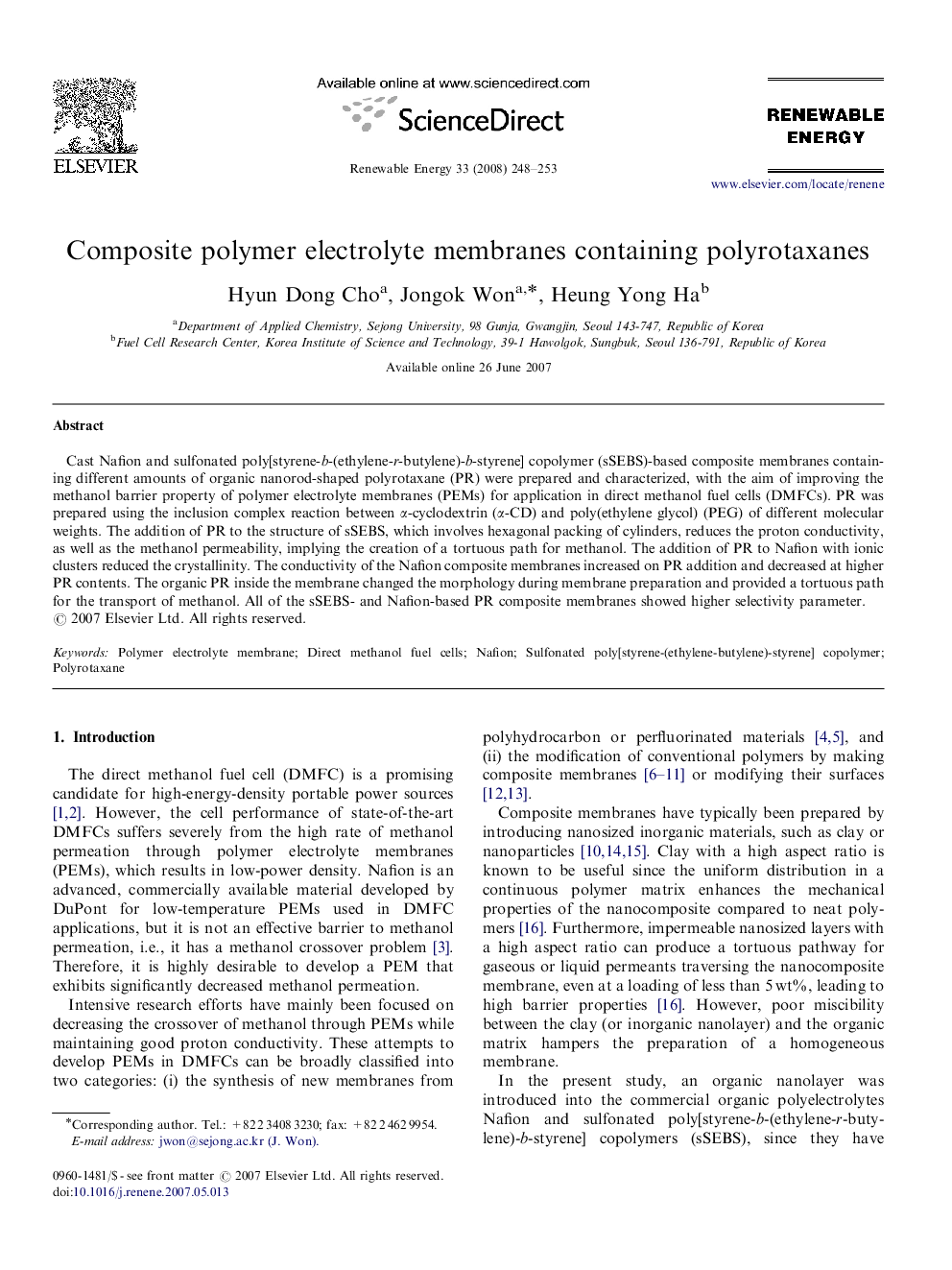| Article ID | Journal | Published Year | Pages | File Type |
|---|---|---|---|---|
| 302806 | Renewable Energy | 2008 | 6 Pages |
Cast Nafion and sulfonated poly[styrene-b-(ethylene-r-butylene)-b-styrene] copolymer (sSEBS)-based composite membranes containing different amounts of organic nanorod-shaped polyrotaxane (PR) were prepared and characterized, with the aim of improving the methanol barrier property of polymer electrolyte membranes (PEMs) for application in direct methanol fuel cells (DMFCs). PR was prepared using the inclusion complex reaction between α-cyclodextrin (α-CD) and poly(ethylene glycol) (PEG) of different molecular weights. The addition of PR to the structure of sSEBS, which involves hexagonal packing of cylinders, reduces the proton conductivity, as well as the methanol permeability, implying the creation of a tortuous path for methanol. The addition of PR to Nafion with ionic clusters reduced the crystallinity. The conductivity of the Nafion composite membranes increased on PR addition and decreased at higher PR contents. The organic PR inside the membrane changed the morphology during membrane preparation and provided a tortuous path for the transport of methanol. All of the sSEBS- and Nafion-based PR composite membranes showed higher selectivity parameter.
